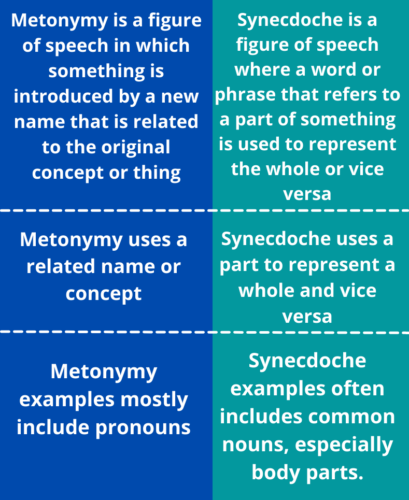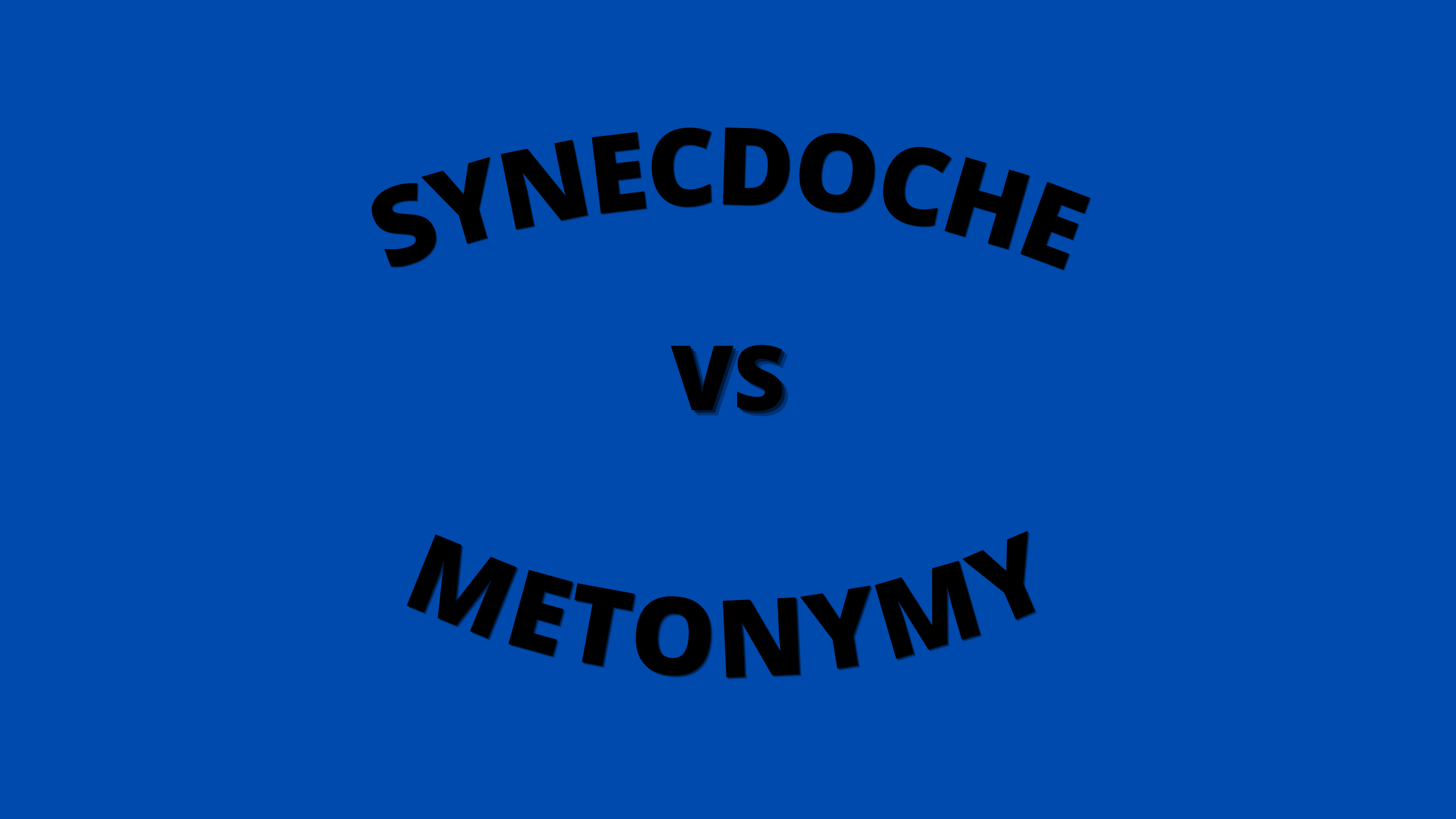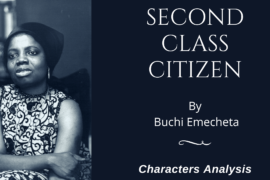Synecdoche and metonymy, are both figures of speech. They were both parts of Ancient Greek rhetoric, and their names have been transferred from Latin into the English language.
The two concepts are extremely alike and, in some cases, overlap, causing lots of confusion. Additionally, there’s lots of conflicting information on the difference between Synecdoche and metonymy.
Metonymy is created by using an entirely new name connected to the original object or idea. Synecdoche is created by using a portion of something in order to represent the whole or in reverse. That is what makes the main difference between Synecdoche and metonymy.
What are Examples of Metonymy and Synecdoche?
Before we begin listing the various examples of metonymy and Synecdoche, We will need to understand each of the figures of speech, i.e., Synecdoche and metonymy.
Metonymy is a figure of speech where something is identified through the title of something associated with it. It’s also a figure of speech where it is used to describe an idea or object that is substituted with another name, which the original is connected to.
Examples of Metonymy
Crown – The king or queen
White House – the President of the U.S.A
Hollywood – Celebrities
You may have heard this expression, “The pen is mightier than the sword.” This is a clear example of metonymy. The pen is a reference to the writing word, while the sword is a reference to combat.
Pen, as well as the sword, have replaced the notions of fighting and the written word in their respective meanings.
Below are a few examples of metonymy found in the literature.
“Friends, Romans, countrymen, lend me your ears.” Shakespeare’s “Julies Caesar
(Ears can refer to the idea of paying attention or listening.)
When people use the term “crown” to refer to the power, duty, or the rule of the monarchy, they’re not actually talking about the item that is on their head, but they’re talking about what the object represents.
A good example of this could be:
It is the duty of the crown to promote unity in the community.
In this scenario, it is noticed that the “crown” refers to the obligation, influence, or power of the monarch and not the main object.
It’s also normal to describe news media and the journalists who write about it to the people who compile the data as ‘the media’. It’s a short form for ‘the printing press, which was once employed to create newspapers, the main source of information at the time.
Military officers are often called “brass” because it is an alloy that is used in the design of the form of buttons and insignias. Both are used to indicate the rank of military officers.
It is also extremely frequent to refer to the institutions that are part of the government as the places where the administration is managed.
It is the case in the United States, ‘Washington D.C. or simply “Washington,” are both used to refer to the government in general, and “the White House’ means the president as well as various other executive branches.
In the United Kingdom, ‘Buckingham’ is a reference to royals 10 Downing Street’ means the Staff of the Prime Minister, and ‘Westminster’ refers to Parliament. British Parliament.
Now to Synecdoche, it is when someone refers to an element or a component of something but does not really mean the entire item as well when they refer to the whole thing, but in reality, they are referring to just a portion.
A synecdoche is a figure of speech in which a word or phrase that refers to a specific part of a thing is utilized to denote the entire thing or reversely. In another way, a total is represented through a small part of it, or a portion of it is represented in the entire.
Let’s consider the term wheels as an illustration. If someone mentions ‘nice wheels’, you immediately know that he’s talking about the car and not only the wheels. Synecdoche can also include using the term the cattle head being headed as well as referring to helpers in the form of hands.
Examples of Synecdoche
If someone is talking about their brand new car, they might use the phrase, “Check out my new wheels!” In this case, they don’t mean, “Hey, look at the new wheels that I got on my car,” they’re declaring, “Hey, look at my new car!”
If someone is talking about eating food at the table, they could be saying, “He worked hard to put bread on the table for his family.” This does not suggest that he worked to place only bread at the table. It is more about rather food generally.
Here are some synecdoche examples when someone refers to a complete. However, it refers to a component:
At the Olympics, they declare it as they announced that the United States won a gold medal; however, what’s actually being said is that a certain U.S. team has won an Olympic gold medal.
The term “Pentagon” is a synecdoche when it is used to refer to a handful of people in the Pentagon.
Difference Between Metonymy and Synecdoche
Definition
Metonymy can be described as an expression of speech where something is given the use of a brand new name connected to the original idea or idea.
Synecdoche can be described as an expression of speech in which the word or phrase that refers only to a portion or a part of something can be used to denote the whole or reverse.
New Term
Metonymy is the same term or idea.
Synecdoche makes use of parts to represent the whole or reverse.
Examples
Metonymy instances usually contain proper nouns.
Synecdoche examples usually contain nouns that are common, such as body parts.
Read Also:
3 Main Genres Of Literature
Aesthetics And The 3 Major Theories Of Aesthetics You Should Know
Similarities Between Synecdoche and Metonymy
Both of these figures of speech are based on the substitution of one item with another. In the instance in the case of Synecdoche, it’s the replacement of one thing with some part of it. In the case of metonymy, it’s the substitution of a concept or a thing by a different thing that is closely related to the concept.
Synecdoche and metonymy are so closely linked that some dictionary editors bestow the synecdoche definition on metonymy, for example, Wordweb. It’s even the Concise Oxford Dictionary of Literary Terms defines Synecdoche as “a kind of metonymy”. It is, however, our obligation as scholars of literature to discern between the two.
FAQ
Are all synecdoche metonymy?
Certain people draw distinctions between Synecdoche and metonymy. The most frequent distinction can be that Synecdoche is used with reference to a portion of the item in question, while metonymy can be applied to things that are connected but not necessarily a part.
This is technically right. Since Synecdoche can be described as a kind of metonymy, it is reasonable to conclude that all kinds of metonymy that do not fall under the synecdoche type are also metonymy. However, Synecdoche is a form of metonymy; therefore, any synecdoche-related word is also metonymy.
Is the White House a metonymy or Synecdoche?
It is believed that the White House is commonly cited as a metonymy to refer to the government of the U.S. executive branch government. It’s a type of metonym “where one thing contains another.”
Washington may also be used in this in a different way, using a wider structure to refer to U.S. government entities.
SYNECDOCHE VS METONYMY

In conclusion, it’s difficult to distinguish between both terms. Therefore, be sure to determine what is used to refer to. If the term being used refers to a particular concept, then it’s a metonymy.
When the word is a component of the larger concept being referred to, the term is Synecdoche. In the reverse direction is that if a term is referring to a complete thing, but it’s intended to be an individual part, then it’s an esoteric synecdoche too.




1 Comment
Pingback: What Are The 3 Main Genres Of Literature You Should Know - SmartNib